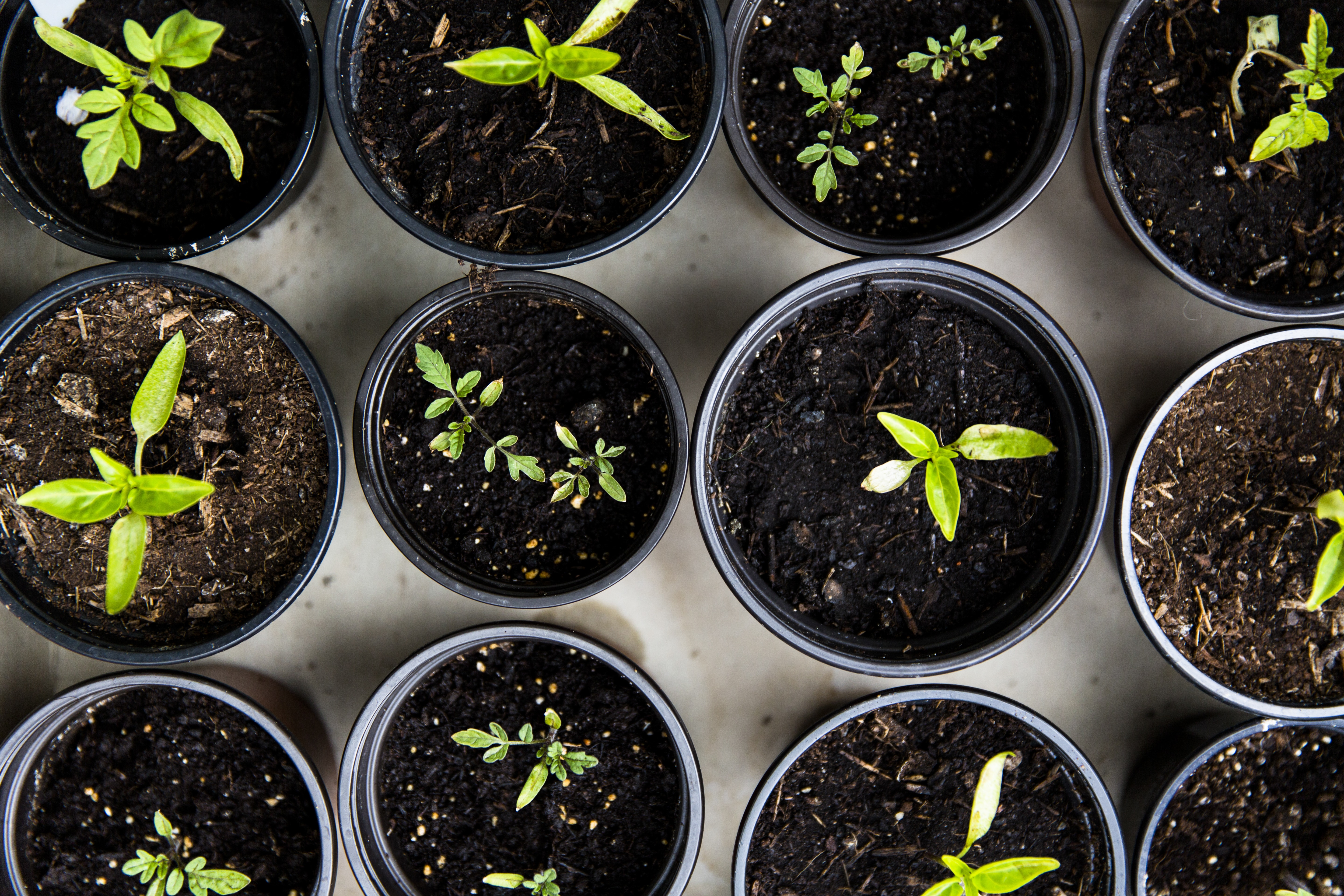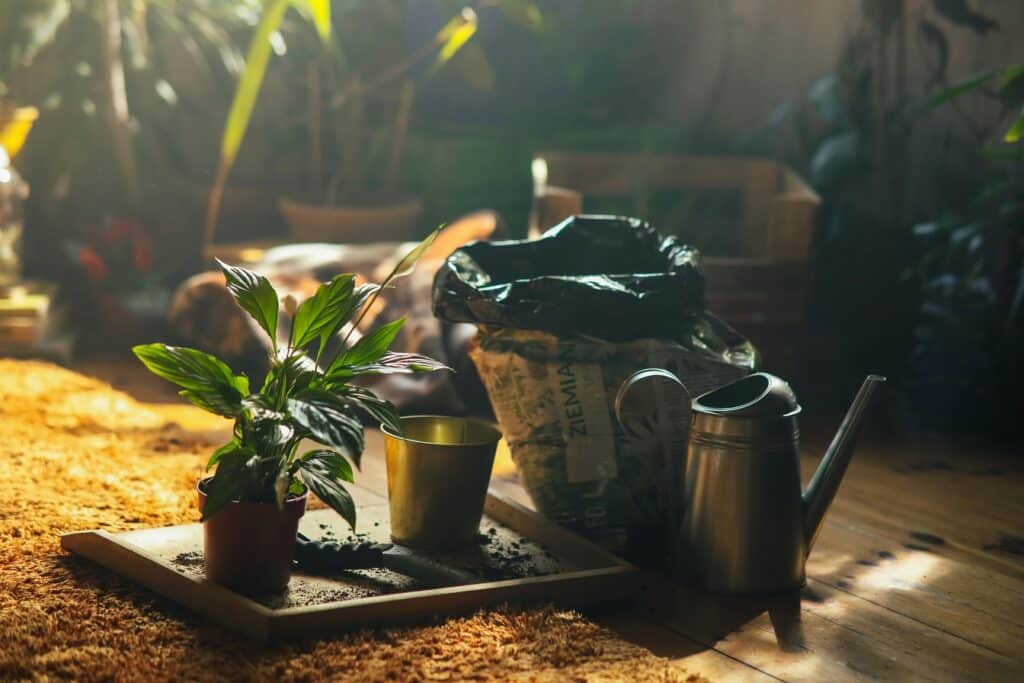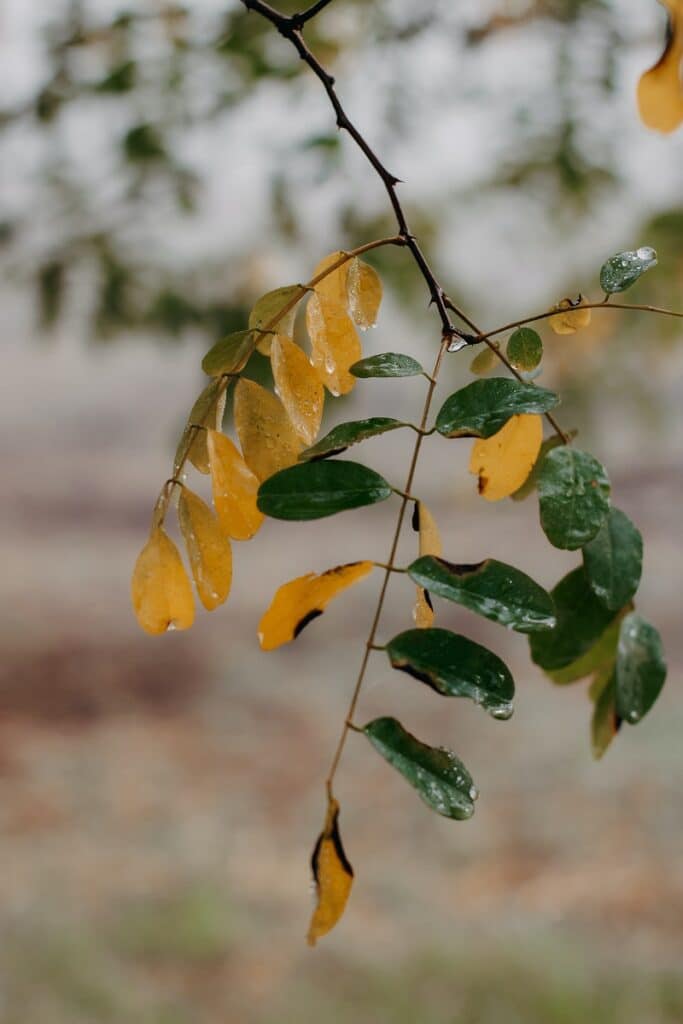Spider plants are renowned for their beauty and popularity as indoor plants. Yet, nothing can be more disheartening than noticing brown tips on their leaves, detracting from their overall allure. These unsightly blemishes have the potential to mar the aesthetic appeal of your cherished spider plant and leave you feeling a sense of frustration. Worry not, for in this article, you’ll uncover practical tips and techniques to prevent those pesky spider plant brown tips on leaves. Armed with some knowledge and attentive care, you can ensure your spider plant remains vibrant and free from the nuisance of brown tips.

Understanding Spider Plants
General Information about Spider Plants
Spider plants, called Chlorophytum comosum, are popular houseplants for their cascading foliage and attractive arching leaves. They are native to South Africa and are prized for their ability to thrive in various indoor environments. Spider plants are a great choice for novice and experienced plant enthusiasts, as they are relatively low-maintenance and versatile.
Significance of Spider Plants in Indoor Environment
Not only do spider plants add an aesthetic appeal to indoor spaces and offer numerous benefits to the environment they are placed in. These plants are known for their air-purifying qualities, as they have been shown to combat common indoor pollutants such as formaldehyde and carbon monoxide. Additionally, spider plants release oxygen and enhance humidity levels, creating a healthier and more pleasant living environment.
Identification of Brown Tips on Spider Plants
Symptoms of Brown Tips Issues
When the tips of spider plant leaves start turning brown, it is a sign that something may be amiss. Brown tips can be a visual indicator of stress or damage to the plant, and it is essential to identify the underlying causes to restore the plant’s health. Observing the overall condition of the foliage and understanding the stages of brown tips can provide valuable insights for addressing the issue effectively.
Identifying Different Stages of Brown Tips
Brown tips on spider plants can develop in several stages, each indicating a different level of damage. Initially, small brown spots may appear at the tips of the leaves. If left untreated, these spots can spread and darken, eventually turning the entire leaf brown. By recognizing the stage at which the brown tips are in, you can take the appropriate steps to mitigate further damage and promote recovery.

Understanding the Underlying Causes of Brown Tips
Overwatering and Underwatering
Both overwatering and underwatering can contribute to the developing brown tips on spider plants. Overwatering causes root rot, leading to inadequate nutrient uptake and discoloration of leaves. On the other hand, underwatering can result in dry soil and dehydration, causing stress and browning of the leaf tips. Finding the right balance and providing proper hydration is crucial to maintaining the health of your spider plants.
Temperature Fluctuations
Spider plants thrive in moderate temperatures; exposure to extreme hot or cold temperatures can cause stress and lead to brown tips. Drastic fluctuations in temperature can shock the plant, hindering its ability to absorb nutrients properly. It is important to keep spider plants in environments with consistent temperatures to prevent damage to the foliage.
Inadequate Humidity
Spider plants originate from regions with high humidity, and inadequate moisture in the air can result in brown tips. Low humidity levels can cause the leaves to dry out, making them more susceptible to damage. Providing adequate humidity through misting or using a humidifier can help prevent brown tips and promote overall plant health.
Poor Lighting
Insufficient or excessive lighting can both contribute to brown tips on spider plants. Spider plants prefer bright, indirect light and can suffer if exposed to direct sunlight for extended periods. Insufficient light can weaken foliage, while intense light can cause sunburn and leaf discoloration. Finding the right balance and ensuring suitable lighting conditions are crucial for keeping spider plants healthy.
Nutrient Deficiency
A lack of essential nutrients can also manifest as brown tips on spider plants. Spider plants require nutrients such as nitrogen, phosphorus, and potassium to thrive. A deficiency in these nutrients can affect the plant’s overall health, leading to brown tips and weakened foliage. Regular fertilization with a balanced fertilizer specifically formulated for houseplants can help provide the necessary nutrients to promote healthy growth.
Common Myths about Brown Tips on Spider Plants
Debunking Myths about Plant Self-Destruction
The myth is that spider plants purposely destroy themselves by developing brown tips. However, this is not the case. Brown tips indicate underlying issues or stress in the plant’s environment. You can prevent further damage and promote plant recovery by addressing the root causes of brown tips, such as watering and lighting issues.
Clarifying Misconceptions about Water Quality
Another common myth is that brown tips are solely caused by poor water quality. While water quality can play a role in plant health, it is not the sole determinant of brown tips on spider plants. Factors such as watering frequency, soil drainage, and humidity levels are equally important in maintaining healthy foliage. Focusing on a holistic approach to plant care is essential rather than attributing brown tips solely to water quality.

Correct Watering Techniques for Spider Plants
Determining Proper Watering Frequency
Finding the right balance when it comes to watering spider plants is crucial to prevent brown tips. It is recommended to water spider plants thoroughly whenever the top inch of soil feels dry to the touch. Avoid overwatering, as this can lead to root rot and browning of the leaf tips. Pay attention to the plant’s moisture needs and adjust the watering frequency accordingly.
Understanding the Importance of Well-Draining Soil
Using well-draining soil is essential for spider plants to prevent waterlogging and root rot. A mixture of peat moss, perlite, and regular potting soil provides adequate drainage and aeration for the plant’s roots. Well-draining soil allows excess water to drain freely, reducing the risk of water accumulation and subsequent brown tips.
Considerations About Free Chlorine and Chloramine in Water
Tap water often contains free chlorine or chloramine, which can be harmful to spider plants. It is recommended to use filtered or dechlorinated water when watering spider plants to avoid potential damage to the foliage. Allowing tap water to sit for 24 hours before use can help dissipate chlorine, reducing the risk of brown tips.
Controlling Temperature and Humidity Levels
Ideal Temperature for Spider Plants
Spider plants thrive in temperatures between 60-75°F (15-24°C). Avoid exposing them to extreme temperatures, as this can result in stress and brown tips. Maintaining a consistent temperature within this range provides optimal conditions for spider plants to grow and prevents damage to the foliage.
Using Humidifiers for Indoor Plants
To counter low humidity levels, especially in dry indoor environments, using a humidifier can be beneficial for spider plants. The additional moisture in the air helps prevent dehydration and keeps the foliage hydrated, reducing the occurrence of brown tips. Place the humidifier near the spider plants, ensuring that the humidity remains at an ideal level for their thriving.
Impact of Seasonal Changes
Seasonal changes can also impact the temperature and humidity levels in the environment, affecting spider plants’ health. During winter, when indoor heaters are commonly used, the air becomes drier, potentially causing brown tips. Adjusting the indoor temperature and using humidifiers can mitigate the effects of seasonal changes and help maintain optimal conditions for spider plants.
Optimizing Lighting Conditions for Spider Plants
Understanding the Light Preferences of Spider Plants
Spider plants prefer bright, indirect light. Placing them near a north or east-facing window is ideal, as it provides moderate light levels without direct sunlight exposure. Avoid placing spider plants in areas with intense, direct sunlight, which can lead to sunburn and brown leaf tips. Adjusting the plant’s position to optimize lighting conditions is crucial to prevent damage.
Strategies for Adequate Indoor Lighting
When natural light is limited, supplementing with artificial lighting can benefit spider plants. Fluorescent or LED grow lights provide the necessary light spectrum for healthy growth. Position the lights above the spider plant, approximately 12-18 inches away, and ensure they are on for 12-14 hours daily to mimic natural daylight. This will help maintain the plant’s health and minimise brown tips’ occurrence.
Ensuring Balanced Nutrition for Spider Plants
Identifying Essential Plant Nutrients
Spider plants require a balanced mix of essential nutrients to maintain their health and prevent brown tips. Nitrogen (N), phosphorus (P), and potassium (K) are the primary macronutrients necessary for healthy foliage and growth. Additionally, micronutrients such as iron (Fe), magnesium (Mg), and calcium (Ca) are also important. Regular fertilization with a well-balanced houseplant fertilizer ensures the plant’s nutritional needs are met.
Choosing the Right Fertilizer
Selecting a suitable fertilizer specifically formulated for houseplants is crucial for spider plants. Look for a balanced fertilizer with an NPK ratio of 10-10-10 or a similar variation. Avoid overfertilizing, as excess nutrients can accumulate in the soil and cause leaf tip burn or brown tips. Follow the instructions on the fertilizer packaging to ensure proper application and prevent nutrient imbalances.
Avoiding Nutrient Overload
While providing adequate nutrients is essential, it is equally important to avoid nutrient overload, as this can lead to fertilizer burn and brown tips. Spider plants are relatively low-maintenance and do not require excessive fertilization. Applying fertilizer at half the recommended strength every 2-4 weeks during the growing season is generally sufficient to maintain optimal plant health without causing nutrient imbalances.
Recovering Spider Plants with Brown Tips
Pruning Techniques for Damaged Foliage
If your spider plant has extensive brown tips, it may be necessary to prune the damaged foliage to encourage new growth. Use clean, sharp scissors or pruning shears to trim off the brown tips and ensure a clean cut. Remove any severely damaged or discolored leaves entirely. Pruning helps redirect the plant’s energy toward healthy growth and improves the overall appearance of the plant.
Revitalizing Plants through Repotting
Repotting can help revitalize spider plants and address underlying issues contributing to brown tips. Ensure that the plant is not severely root-bound and choose a slightly larger pot with adequate drainage holes. Gently remove the plant from its current pot, untangle any tangled roots, and place it in the new pot with fresh well-draining soil. Repotting allows addressing any root-related issues and creating an optimal environment for the plant’s recovery.
When to Consider Plant Propagation
Suppose your spider plant has extensive and severe brown tips with minimal healthy foliage. In that case, it may be more effective to consider plant propagation rather than trying to revive the existing plant. Propagation involves taking healthy plantlets or spiderettes and growing them into new individual plants. This allows you to start fresh and avoid carrying forward any pre-existing issues that may have contributed to the brown tips.
Additional Tips and Best Practices
Dealing with Common Pests and Diseases
Spider plants are generally resilient and not prone to significant pest or disease issues. However, they can occasionally be affected by pests such as spider mites or mealybugs. Regularly inspect the plant for any signs of infestation and take appropriate measures, such as using insecticidal soap or neem oil, to eliminate the pests. Prompt treatment helps prevent stress and damage that can lead to brown tips.
Benefits of Grouping Plants for Increased Humidity
Grouping spider plants with other houseplants can create a microenvironment with increased humidity levels. As plants naturally release moisture through transpiration, grouping them together enhances the overall humidity around them. This can help to prevent dehydration and reduce the occurrence of brown tips, especially in dry indoor environments.
Avoiding Sudden Environmental Changes
Spider plants are sensitive to sudden changes in their environment. Avoid moving spider plants between locations with significantly different temperature, lighting, or humidity conditions as this can cause stress and lead to brown tips. When making any changes, gradually acclimate the plant over a period of days or weeks to allow it to adjust and minimize the risk of damage.
In conclusion, understanding spider plants and the potential causes of brown tips is essential for maintaining their health and preventing further damage. By addressing issues such as watering techniques, lighting conditions, and nutrient deficiencies, you can ensure your spider plants thrive and enjoy their attractive foliage without the presence of unsightly brown tips. With proper care and attention, your spider plants will continue to bring beauty and freshness to your indoor environment.




